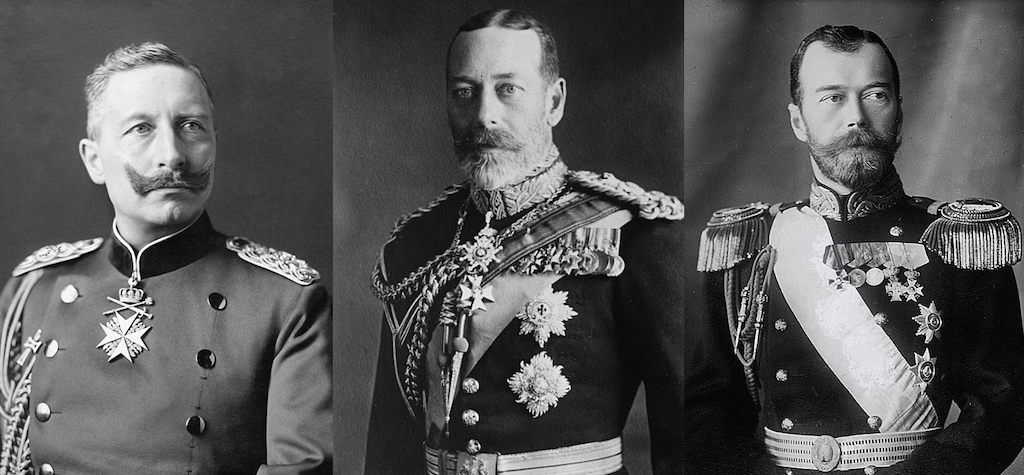This is a family feud like the world has never seen, one so large that it turned into a war…and the largest war the world had seen up to that time. But there’s a reason World War I escalated so quickly, of course: it was personal.
The war accounted for 9 million combat deaths and another 5 million civilians, including those who perished from disease, hunger or other side effects of the war. From July 28, 1914 to November 11, 1918, the “Great War” ravaged superpowers from across the world, including Europe, Russia, the U.S. and Turkey.
But let’s get back to the cousins – who were they and why were they fighting in the first place?
King George V of Great Britain and Kaiser Wilhelm II of Germany were grandsons of Queen Victoria, making them first cousins. Before her death, Queen Victoria was often called the “Grandmother of Europe,” as her children all married prominently, many into ruling families of various countries.
In addition, Tsar Nicholas II of Russia was first cousins with King George V on his mother’s side, the Danish royal family. While Nicholas and Wilhem also remained fifth cousins. This, of course, led to three kings (or their country’s equivalent) of relation, all in charge all at the same time.
It is also said, that, had Queen Victoria still been alive, she would have never let her grandsons go to war with one another. But alas, the world will never know if that would have held true.
How the war among family began
In 1914, Germany declared war against Russia and France after an ongoing conflict in southeastern Europe. Austria had previously declared war on Serbia after Archduke Franz Ferdinand was assassinated. At this time, multiple treaties were in place, causing countries to come to their allies’ defense.
This caused Great Britain, an ally of France, to declare war against Germany; the cousins remained loyal to their treaties, rather than blood. The United States remained neutral until their ships were attacked in 1917 and they declared war against Germany.
The war was fought over nationalism, imperialism and politics – parties wanted to grow their own reach and ideas. For three years, the war was fought in trenches between fenced-off areas of “no man’s land.” Germany and Austria-Hungary fought a two-front war at this time at the Eastern and Western borders of their countries.
However, what makes the war even more significant is its size and destruction, being by far the largest of its kind to date.
Conditions were rough, to say the least, and soldiers died by the millions, from all countries. What’s worse is that no one side gained much ground over the other. However, Russia left the war in March of 1918.
Did the cousins survive?
Of the three cousins involved in the start of World War I, two survived, George V and Wilhelm II. Their counterpart, Nicholas II of Russia, was captured by revolters and sent to Serbia. He was executed just months after his country pulled themselves from the war. His remains, along with his wife’s and three of their children, were found in 1979 and identified in 1998.
Wilhem died in the Netherlands in 1941; Hitler attempted to recover the body for propaganda purposes, though Wilhem’s will stated his remains were not to return unless the monarchy had been restated.
George V died in 1936 after ongoing health battles.

